Group Riding: Communication
SLOWING Wave hand, palm down
Made (preferably before it happens) when the group changes speed, due to upcoming obstacle or hazard.
STOPPING Hand down, palm backwards
Indicate the bunch will be coming to a stop.
ROLLING
To make the whole group aware to begin/continue moving, such as when the lights turn green.
MECHANICAL / PUNCTURE
To inform the whole group of a puncture or other mechanical problem, so everyone can slow down and stop when and where it is safe to do so. Do not brake or swerve suddenly.
RIGHT TURN / LEFT TURN Arm out, parallel to ground, in direction of turn
Bunch will be turning if road is clear, be alert.
OUT Left arm bent and placed behind back with finger pointing to the right
The bunch needs to move to the right to avoid an object, e.g. a parked car or a jogger in the road. Can also be used with right arm to indicate moving left to avoid obstacles to the right, e.g. car turning right. IN
CLEAR
Made when turning corners or through roundabouts to signal it is safe. (Also ‘clear left’ and ‘clear right’)
HOLE, DOOR, GRAVEL etc. Point at obstacle
Slowly move across the road to a position where you, and those following, can avoid the hazard, point to where the obstruction is to allow those behind to avoid it, and then slowly move back to the original position on the road. Pass the call all the way to the back.
SINGLE OUT
Sometimes it may be safer for the group to ride in single file rather than in a double line, e.g. when riding up or down a steep hill. Riders on the left hand (inside) line should then adjust their pace to allow the riders on the right hand (outside) line to move across and form part of the new, single, line.
PAIR UP/TWO UP
Move from single file into riding two abreast again. Shoulder check before moving out.
CAR UP
On a narrow street a car coming the other way presents a potential risk so stay tight to the left.
CAR BACK
A car is behind the bunch wanting to pass or a car is overtaking the bunch.
HORSES Same as Slowing
In these circumstances the group should also slow so as to be able to pass the horses safely. As you near the horses you should then greet the horse riders to ensure that both horses and riders are aware of your approach. Continue soft pedalling to avoid startling the horses with your freehub.
ALL UP?
Made from the front riders to ask if the bunch has regrouped.
Riders at the back reply with YES, ALL UP!, or NO
EASE UP
To request the riders at the front to slow the pace slightly so the whole group can stay together. It does not mean a sudden slowing or braking, but rather slightly reducing the effort required to keep up while continuing to pedal.
STEADY
Used to tell riders at the front not to speed up, but maintain current pace.
CHANGE ONE Single finger twirl
Used to rotate riders at the front of the group when riding in pairs (see Group Riding Techniques below).
Next - Group Riding: Techniques
